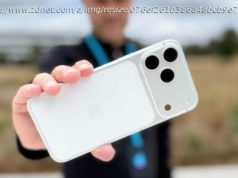Curtin University is looking to IoT to gather information on building trends, study patterns, and course attendance so that it can optimise resources while improving staff and student experiences.
Curtin University has announced that it is transforming its 300,000 square metre campus into a «smart» one through the deployment of sensors and analytics technology from Hitachi.
The Perth-based university, which has more than 60,000 students and 4,000 staff, is looking to obtain information on how buildings and spaces such as car parks are used, as well as study patterns and course attendance, said Curtin University COO Ian Callahan.
Keith Roscarel, director of public safety and smart cities at Hitachi Asia Pacific, told ZDNet that the university is feeding video and other sensor data into an analytics engine, as well as testing facial recognition and «people counting» technology to monitor student attendance.
Rather than being a Big Brother-like operation to identify truants, Roscarel said visibility over attendance allows the university to determine the right sizing for lecture halls and tutorial rooms, as well as understand parking and public transport requirements.
«It’s about optimising their infrastructure, » Roscarel said. «It’s about creating a repeatable framework that doesn’t require new aspects and forms of technologies to be introduced over time.»
Last month, Curtin University said facial recognition technology will play an important role in on-campus safety and convenience — allowing for features such as keyless entry housing.
Roscarel, who is closely involved in the «smart campus» project, said having visibility also allows the university to reach out to students with low attendance rates and better understand what issues they might be facing.
«A lot of education is taking place online and it’s very easy to see who’s coming online, who’s actually seeing the livestream, who’s watching a recording of a lecture. But it’s becoming less and less easy to understand who’s actually turning up to the lecture, » Roscarel said.
«Especially in the first year, if anyone’s not attending for whatever reason — it could be an academic issue, it could be a socialisation problem — it gives the university the opportunity to understand who may potentially be at risk or if there is some issue that needs to be addressed.
«The cost of a student over three years is quite significant, so for someone to go through the enrolment process and drop out has quite a large impact.»
Curtin University and Hitachi have also been exploring other opportunities such as optimising parking, according to Roscarel. The university is looking to reduce the demand for parking spaces by encouraging carpooling among students.
«If one student lives in the same suburb as another student and have a similar set of subjects, they could opt in as a student to be introduced [to each other] and potentially carpool, » Roscarel explained. «That would be achieved through understanding which vehicles and students are coming through the doors at what times through facial recognition and number plate recognition.»
«We would use other technologies to analyse the volume of a car park, providing real-time information back to central application that would be able to inform the real-time status of the car parks.»
The university will be rolling out Hitachi’s technologies over the coming 12 to 18 months.
Curtin is not the only Australian university pursuing a smart campus.
Melbourne’s Deakin University has been working with Cisco and Dimension Data on a number of smart campus initiatives to personalise experiences for its staff and students. Deakin allows students via mobile apps and digital signage to see which parts of the library are most crowded, request assistance, and check out books.
William Confalonieri, chief digital officer and VP of Deakin University, said in July last year that the university’s motivation for adding a digital layer on top of its physical environment is to stay ahead of competitors and provide students with a better standard of learning.






